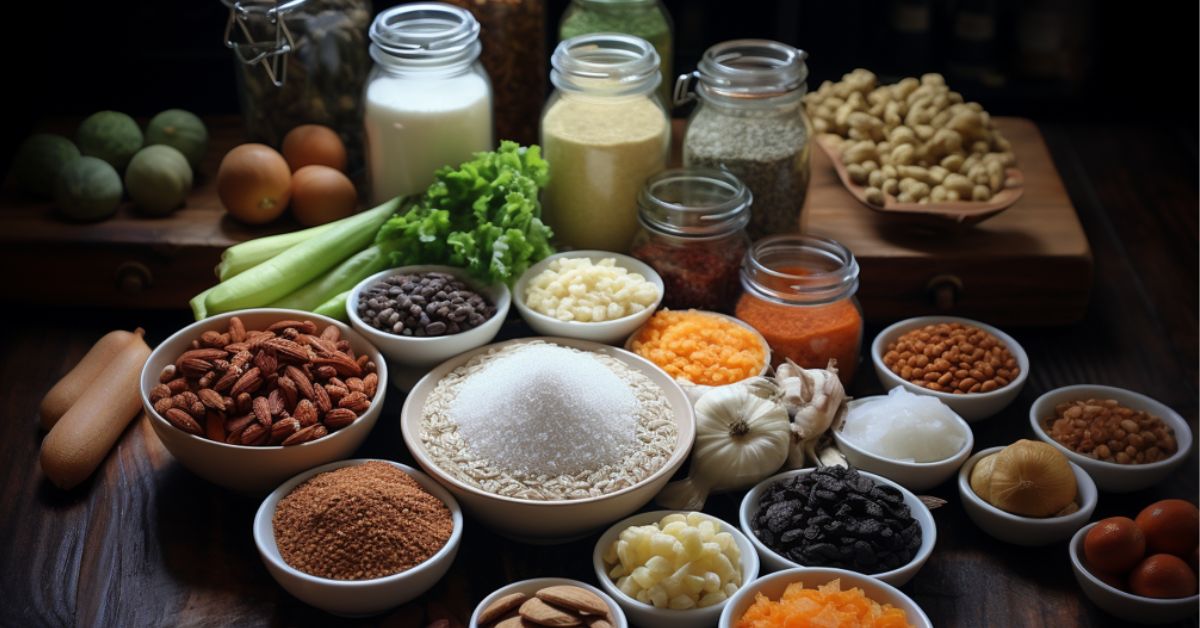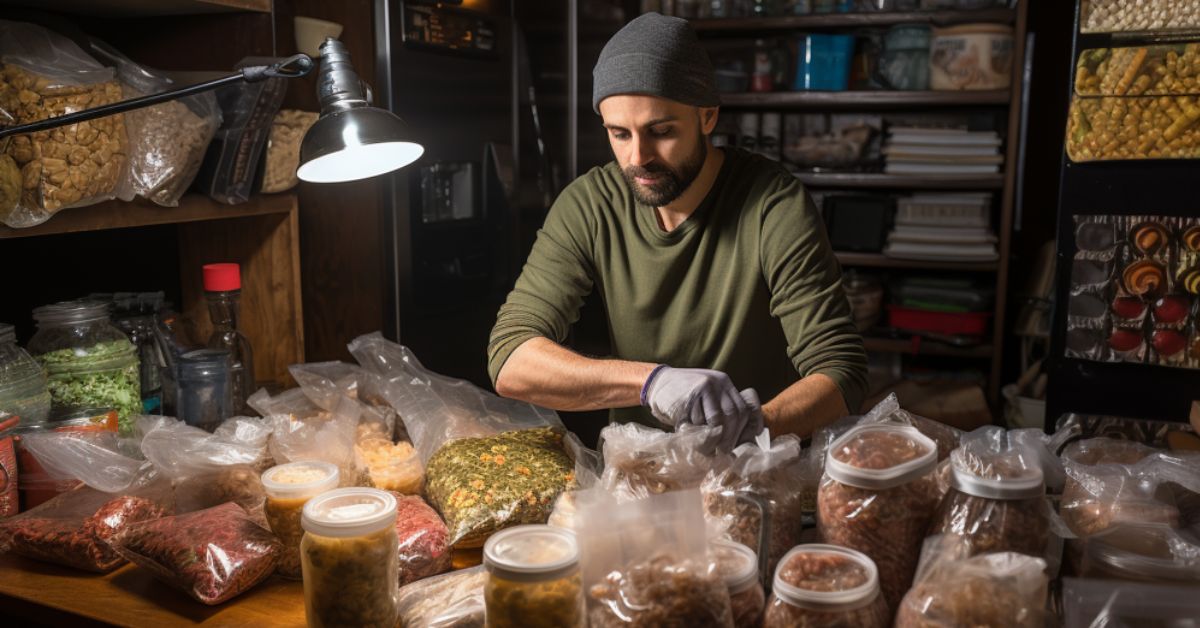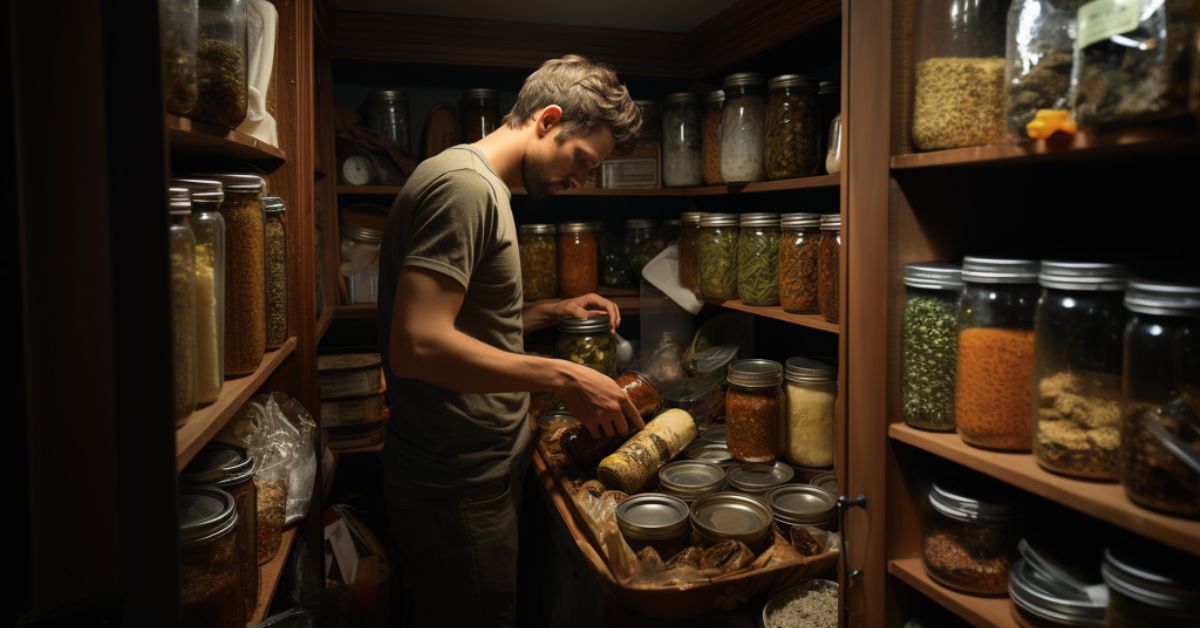Mastering long term food storage in hot climate conditions can seem like a daunting task. Yet, with the right knowledge and strategies, it can be achieved effectively.
Long-term food storage in hot climates requires a careful selection of food items, efficient packaging, a cool and dry storage environment, and regular maintenance. This involves choosing non-perishable items, using airtight containers, and routine inspection.
Curious about how to ensure your food supply remains fresh, nutritious, and safe, even in the sweltering heat? Read on to learn more about the challenges of hot climate storage, choosing suitable food items, proper packaging methods, and creating optimal storage conditions.
Why is Storing Food in Hot Climates Difficult?
Hot climates accelerate the degradation of food due to increased bacterial growth and enzymatic reactions. You may even find food items that last forever tricky to store in such condition.
The high temperatures speed up these processes, leading to faster spoilage, even for foods that would typically have a longer shelf life in cooler environments. In addition, the heat can result in nutrient loss and unfavorable changes in the taste and texture of your food.
Another issue is the physical degradation of packaging, especially for canned goods.
Under high heat, cans can bulge or even rupture, making the food inside unsafe to eat. This risk underscores the importance of choosing the right packaging for long-term storage and regularly inspecting your supplies.
Furthermore, food stored in hot climates can be a magnet for pests.
Dry goods like grains or cereals can attract insects and rodents, and if these pests manage to breach your storage containers, they could contaminate your entire stock. Hence, effective pest management strategies are crucial to protect your food supplies from such threats.
Choosing the Right Food for Long-Term Storage in Hot Conditions

Selecting suitable food for long-term storage in a hot climate can significantly improve the longevity and quality of your supplies. We’ll explore the types of food that can withstand the heat, as well as those you should avoid for long-term storage.
The Best Foods for Long-Term Storage in Warm Climates
Certain foods are more suited to long-term storage in hot climates due to their lower moisture content and longer shelf life.
Non-perishable items like powdered milk, dehydrated fruits, vegetables, and meats can retain their quality and nutrition in warm conditions. These foods are less prone to bacterial growth, making them safer and more durable choices for hot environments.
In addition, whole grains, dried beans, and rice are also excellent options for long-term storage in a hot climate.
When stored properly, these foods can last for 30 years and more. Sealing them in airtight containers with oxygen absorbers helps to protect them from heat, humidity, and pests, extending their shelf life even further.
You can also explore other methods, such as preserving eggs using mineral oil, which can keep eggs fresh for several months without refrigeration.
If you’re interested, you might want to read more about the top 20 foods with long shelf lives.
Foods to Avoid When Storing Long-Term in High Heat
Certain items, while nutritious and valuable or cheap foods that last a long time, are less suitable for long-term storage in hot climates.
Dairy products and canned meats, for instance, are prone to spoilage when exposed to high temperatures for extended periods. The heat can compromise their safety and taste, so they should only be stored short-term or in cooler conditions.
Additionally, foods with high oil content can also be problematic in warm climates.
Nuts, seeds, and chocolate, while delicious and healthy in moderation, contain oils that can become rancid quickly when exposed to heat. If you plan to store these items, it may be worth exploring cooling solutions or alternative storage methods to keep them fresh.
Proper Storage Techniques for Hot and Humid Conditions

Now that we know the top prepper foods to store, let’s discuss how to store it. Efficient packaging methods and effective storage principles are critical to preserving your food in a hot climate.
Principles of Effective Long-Term Food Storage in Hot Climates
The success of long-term food storage in hot climates largely hinges on controlling two main factors: temperature and humidity.
High temperatures accelerate spoilage, while humidity can encourage mold growth. If possible, aim to keep your storage area below 70°F (21°C). This temperature can significantly increase the shelf life of your food items and deter pest infestations.
In addition to temperature, humidity must be kept under control to prevent moisture-related spoilage. Excess humidity can lead to mold growth, which can spoil your food supplies quickly and pose health risks.
Using dehumidifiers, silica gel packs, or simply ensuring good air circulation can help maintain the right humidity levels in your storage area.
Packaging Methods to Keep Your Food Fresh Longer in Heat
The right packaging can be a game-changer in preserving your food in hot climates.
Vacuum-sealed bags, airtight containers, and food-grade buckets can provide your food with a protective barrier against heat, moisture, and pests. These containers work to keep external factors at bay, ensuring that your food stays fresh and safe for longer.
In addition to quality containers, oxygen absorbers can significantly extend the shelf life of your food.
By removing oxygen from the container, these absorbers can prevent oxidation and the growth of aerobic bacteria and fungi. Including an oxygen absorber in your packaging can make a significant difference, especially when storing food in hot climates.
Tips for Lowering Temperature and Humidity in Your Food Storage
Finding ways to lower the temperature and humidity in your storage area can be key to preserving your food.
Basements, cellars, or even specially-designed root cellars can offer cool and dry conditions. If these aren’t an option, you might consider using air conditioning, dehumidifiers, or insulation materials to maintain the temperature and humidity at appropriate levels.
Keeping your food storage out of direct sunlight can also help control heat levels.
Sunlight can quickly raise the temperature of your storage area, leading to faster spoilage. By choosing a location away from windows or other areas where sunlight can directly reach, you can avoid this extra heat and extend the shelf life of your food.
Choosing the Right Location for Your Food Storage
Location plays a vital role in long-term food storage, particularly in hot climates. It’s crucial to choose a location that is consistently the coolest and driest part of your home.
Areas near ovens, dishwashers, or large windows should be avoided as they can accumulate heat, making the location unsuitable for food storage.
Moreover, it’s wise to keep your food storage off the floor and away from walls. This strategy helps to protect your supplies from potential flooding or pest infestations.
Managing and Maintaining Your Food Stockpile in Warm Conditions

The journey of successful long-term food storage doesn’t end at creating a suitable environment and packing the food appropriately; it involves continuous oversight and maintenance. From inspecting your stockpile to managing common issues, let’s delve into key practices for managing your food storage in a hot climate.
How to Regularly Inspect and Rotate Your Food Supply
Routine inspection of your food supply is essential to identify any signs of spoilage early, such as unusual odors, bulging can lids, and mold growth. These signs indicate that your food may not be safe for consumption and should be removed immediately.
Additionally, keeping a record of when each item was stored can help you monitor its age and quality over time.
Implementing a “first in, first out” rotation system can also greatly extend the life of your food supply. By using older supplies first and replacing them with new purchases, you can ensure that nothing is left sitting for too long.
This practice not only maintains the freshness of your supply but also ensures that you’re always consuming food that is safe and nutritious.
Dealing with Common Issues in Long-Term Food Storage in Hot Climate
As mentioned earlier, hot climates not only speed up food spoilage but also provide a perfect breeding ground for pests. Therefore, pest control should be a crucial part of your food storage management.
Using pest-resistant containers, maintaining cleanliness in your storage area, and regular inspection can help keep these unwelcome guests at bay.
Mold is another common issue when storing food in warm climates.
It can rapidly colonize your food supply, rendering it unsafe to eat. If you detect any mold on a food item, it’s best to discard it immediately to prevent the spores from spreading.
Maintaining low humidity in your storage area and regularly inspecting your food supply can help prevent mold growth.
Long-Term Food Storage Success in Hot Climates
Successfully storing food long-term in a hot climate involves an understanding of the challenges, choosing suitable foods, implementing effective storage techniques, and regular monitoring and maintenance.
Despite the obstacles, it’s entirely possible to have a thriving food stockpile in a hot climate. Armed with this practical guide, you are now well-equipped to ensure your food supply remains safe, nutritious, and ready to use.
Remember, your success in long-term food storage relies heavily on careful planning, adaptability, and regular maintenance. Now, you’re ready to face the heat and keep your food storage in top condition, no matter the climate.
